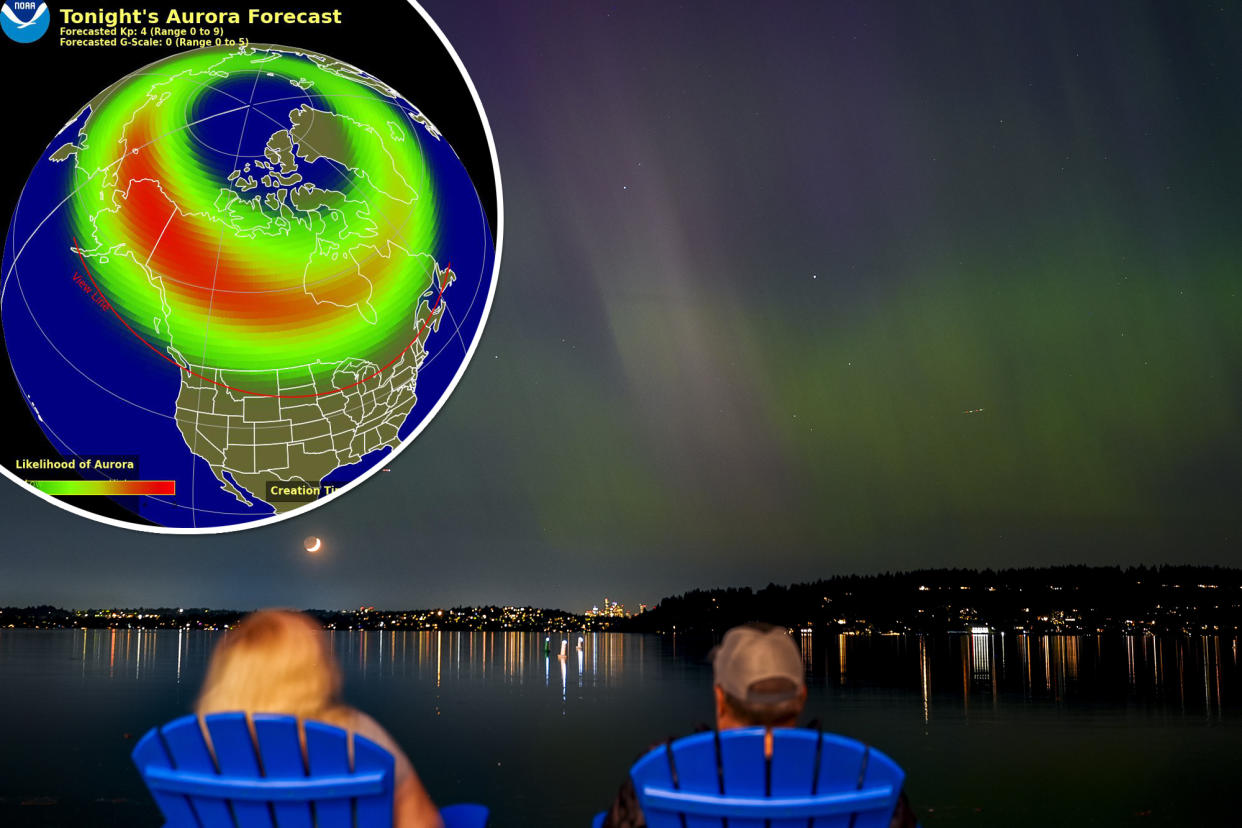You have one more chance to see the Northern Lights: These are the best places in the US for skywatching

Did you miss the FOMO-inducing aurora borealis over the weekend? No need to wish upon a star.
Astro enthusiasts have one final shot to see this cosmic fireworks display from certain regions across the US and Canada.
“This is a prediction of the intensity and location of the aurora borealis tonight and tomorrow night over North America,” the National Oceanic and Atmospheric Administration (NOAA) wrote on their Space Prediction Weather site.
For the uninitiated, over the weekend, a rare Category 5 geomagnetic storm caused this luminescent phenomenon to be visible to millions of people across the world, from Ukraine to South Florida, inducing mass FOMO as radiant pics circulated the internet.
And while the northern lights have begun to wane, this magnetic marvel will still be available in the Northernmost parts of the US as well as Canada, per a forecast map by NOAA.

The US regions encompass Alaska, Washington, Idaho, Montana, North Dakota, Minnesota, Michigan, Pennsylvania, Ohio, Vermont, New Hampshire, Maine, and New York.
Unfortunately, over the weekend, a pea soup fog largely obscured Gothamites’ views of the event, forcing them to watch the phenomenon via livestream.
Fortunately, the light show can be observed from over 600 miles away if the “aurora is bright and if conditions are right.”


Meanwhile, stargazers can find out if and when the northern lights will be visible in their area by referring to real-time aurora-tracking apps and websites.
One of the better apps is Aurora Borealis Forecast & Alerts, available on the App Store for iPhone users and Google Play for Android trustees.
Aurora hopefuls can also check out the website auroranotifier.com for updates and forecasts.
Geomagnetic storms are caused when The Sun emits powerful energy pulses that batter our planet, potentially causing blackouts and other voltage issues.
This particular storm was traced to a colossal sunspot cluster that’s 17 times the diameter of Earth, according to NOAA.


